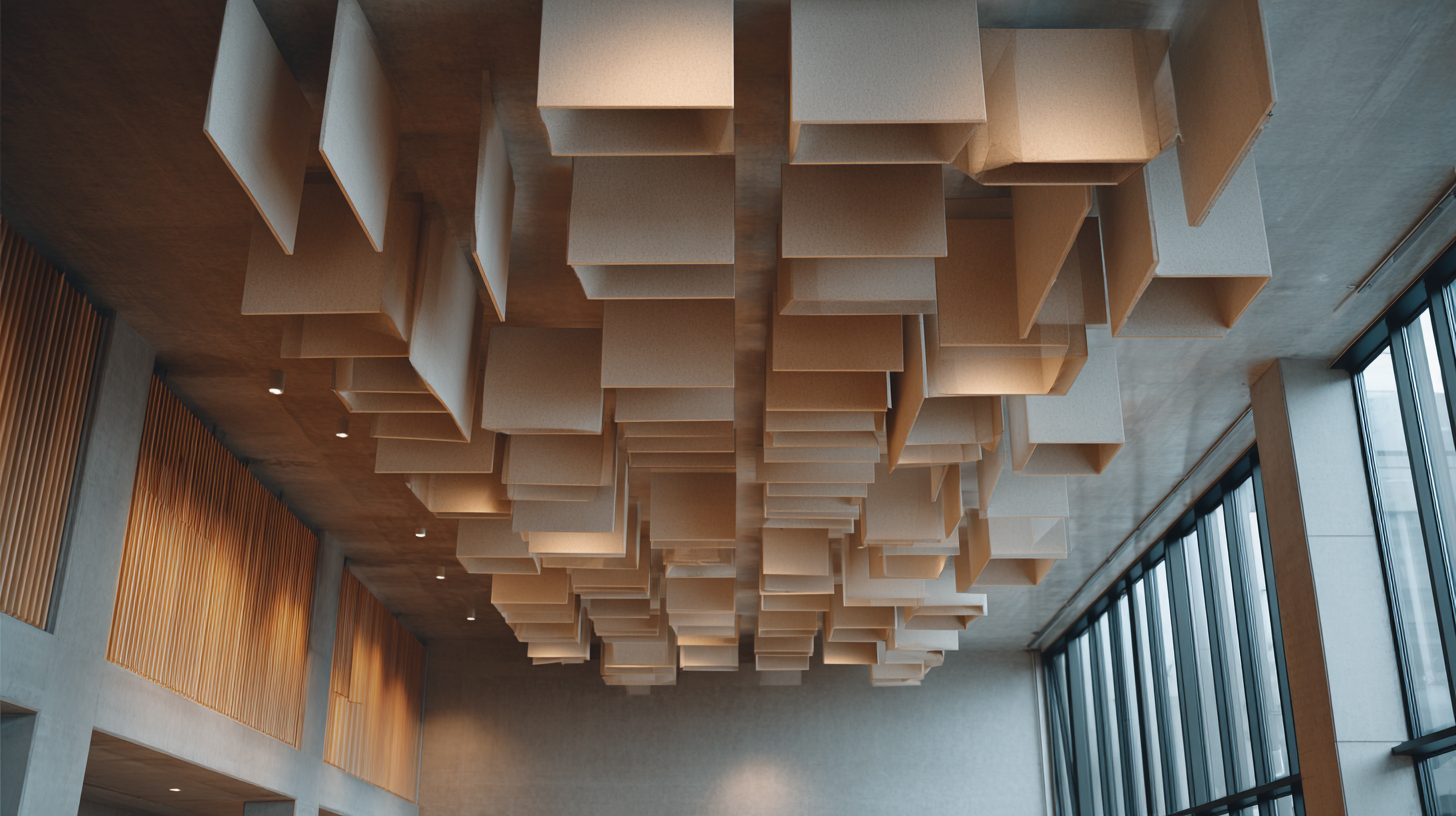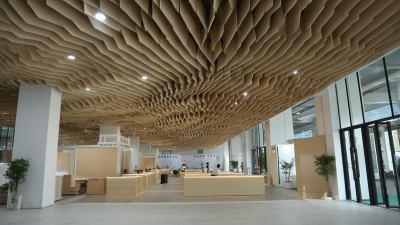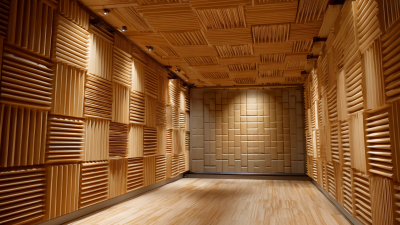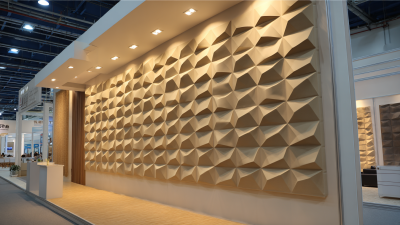Transform Your Space: The Surprising Benefits of Acoustic Ceiling Tiles Explained
In today's fast-paced world, the importance of creating a harmonious and productive environment cannot be overstated. One often overlooked yet transformative solution is the incorporation of Acoustic Ceiling Tiles. These innovative tiles not only enhance the aesthetic appeal of any space but also significantly improve sound quality and reduce noise pollution. Whether in an office, classroom, or public venue, the benefits of Acoustic Ceiling Tiles extend beyond mere functionality; they play a crucial role in promoting health, well-being, and productivity. By absorbing sound and minimizing distractions, these tiles foster an atmosphere conducive to focus and creativity. As we explore the surprising advantages of Acoustic Ceiling Tiles, we will uncover how they can fundamentally reshape our environments, making them more enjoyable and efficient for everyone who occupies them.

Discover How Acoustic Ceiling Tiles Enhance Your Interior Aesthetics
Acoustic ceiling tiles are not only functional but also play a significant role in enhancing interior aesthetics. According to a report by the National Institute of Building Sciences, well-designed acoustical systems can reduce noise levels by up to 50%, allowing for a more peaceful environment. This noise reduction contributes to a more pleasant atmosphere in spaces such as offices, educational institutions, and healthcare facilities. The choice of color, texture, and design in acoustic tiles allows for creative freedom, making it possible to align the ceiling design with the overall theme of the space.
Moreover, the versatility of acoustic ceiling tiles extends to their ability to incorporate various styles and finishes that complement modern interior design trends. A study from the Acoustical Society of America highlights that spaces that utilize aesthetically pleasing acoustic solutions not only improve acoustics but also enhance perceived value and attractiveness. This is increasingly important in commercial spaces where customer experience is paramount. By selecting harmonious colors and patterns, designers can create a cohesive environment that appeals to both employees and clients alike, ensuring that the look and feel of the space are as inviting as they are functional.
Transform Your Space: The Surprising Benefits of Acoustic Ceiling Tiles
Acoustic ceiling tiles not only enhance the aesthetics of a space but also provide various functional benefits. The following chart illustrates the perceived benefits of using acoustic ceiling tiles based on survey data collected from interior design professionals.
The Science Behind Sound Absorption: How Acoustic Tiles Work
Acoustic ceiling tiles play a crucial role in managing sound within various environments, from offices to classrooms. The science behind sound absorption is rooted in the material properties of these tiles. Typically made from fibrous materials, such as mineral wool or fiberglass, acoustic tiles are designed to trap sound waves. When sound waves hit the textured surface of the tiles, they are absorbed rather than reflected, reducing noise levels and improving overall acoustics in a space.
The effectiveness of acoustic tiles in sound absorption lies in their density and thickness. Thicker and denser materials generally absorb more sound energy, particularly low-frequency noise that can be disruptive. Additionally, the porous structure of these tiles allows sound waves to penetrate deeper, enhancing their absorptive properties. By strategically installing acoustic ceiling tiles, one can create a quieter, more productive environment, making them an essential consideration for any noise-sensitive space.
Top Benefits of Installing Acoustic Ceiling Tiles in Your Space
Installing acoustic ceiling tiles offers a myriad of advantages that extend beyond mere aesthetics. According to a report by Acoustical Solutions, well-designed acoustic treatment can reduce noise levels by up to 50%, drastically enhancing the clarity of conversations and overall communication within a space. This reduction in ambient noise not only fosters a more productive environment but also contributes positively to the well-being of occupants. For example, in open office settings, studies have shown that implementing acoustic solutions like ceiling tiles can improve employee concentration and satisfaction, reducing distractions that typically arise in noisy environments.

Additionally, acoustic ceiling tiles play a vital role in energy efficiency. The U.S. Department of Energy has indicated that incorporating such tiles can help in managing heating and cooling loads more effectively, potentially leading to energy savings of 10-30%. This is especially important for commercial spaces aiming to meet sustainability goals while lowering operational costs. Furthermore, the use of these tiles facilitates a comfortable acoustic environment, which is crucial in sectors like healthcare and education, where acoustic comfort directly influences performance and recovery outcomes. Investing in acoustic ceiling tiles is not just about sound control; it’s an essential strategy for improving productivity, comfort, and energy efficiency.
Innovative Design Tips for Incorporating Acoustic Tiles
Incorporating acoustic ceiling tiles into your design not only enhances sound quality but also adds a modern touch to your interior spaces. As we approach 2025, the trend of integrating functional design elements into homes is becoming increasingly popular. Designs that blend aesthetics with practicality are favored, and acoustic tiles fit perfectly within this framework. Reports indicate that homes with better acoustics can improve overall well-being, as reduced noise levels contribute to a more peaceful environment.
To creatively incorporate acoustic tiles, consider playing with color and texture, which can transform the perception of a room while improving acoustics. For example, using colorful acoustic panels as accent features not only addresses sound absorption but also adds a pop of visual interest. Another innovative approach is layering these tiles with various materials, which can amplify both the design and functionality of your ceiling. This integration of style and performance is set to define modern interiors, reflecting a harmonious balance between art and utility.
Transform Your Space: The Surprising Benefits of Acoustic Ceiling Tiles Explained
| Feature | Benefit | Design Tips |
|---|---|---|
| Noise Reduction | Decreases ambient noise levels for a more pleasant environment. | Use in open office spaces or home theaters for optimal sound quality. |
| Aesthetic Variety | Available in various colors and designs to match décor. | Incorporate tiles of different patterns to create a dynamic ceiling look. |
| Easy Installation | Quick to install, often requiring minimal tools. | Consider a DIY approach for small rooms or personal projects. |
| Energy Efficiency | Helps regulate indoor temperature by providing insulation. | Pair with LED lighting to further enhance energy savings. |
| Health Improvement | Reduces stress and promotes concentration by minimizing distractions. | Incorporate soothing colors to enhance relaxation and productivity. |
Cost-Effective Solutions: Maximizing Value with Acoustic Ceiling Tiles
The global acoustic ceiling tiles market is on a robust growth trajectory, projected to reach approximately USD 11.53 billion by 2033, with a compound annual growth rate (CAGR) of 5.21%. In 2023 alone, the market was valued at around USD 7.3 billion, highlighting a significant increase in demand for these sound-absorbing solutions. This growth can be attributed to their cost-effective nature, as they not only enhance acoustics but also improve the aesthetic appeal of various spaces.

Moreover, the increasing awareness of noise pollution's effects on productivity and health is driving the adoption of acoustic ceiling tiles across commercial, residential, and industrial sectors. Architects and builders are increasingly incorporating these tiles into their designs, recognizing their potential to create quieter, more comfortable environments. As businesses and homeowners alike strive for effective noise control solutions, acoustic ceiling tiles offer a valuable investment that maximizes both functionality and design.
Related Posts
-

Exploring Innovative Sound Deadening Panels at the 138th China Import and Export Fair 2025
-

Transforming Spaces with Wood Acoustic Panels at the 138th China Import and Export Fair 2025
-

What Are The Benefits of Installing Sound Panels for Walls?
-

Exploring the Market Trends of Sound Absorbing Wall Panels at 2025 China Import and Export Fair

